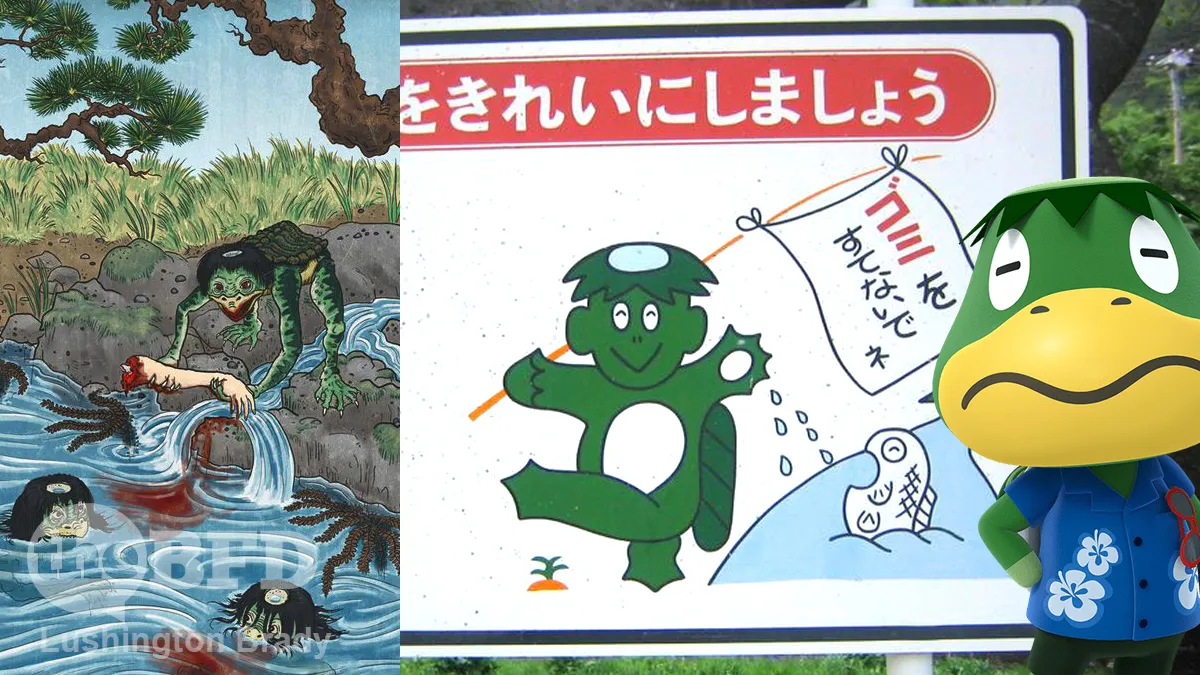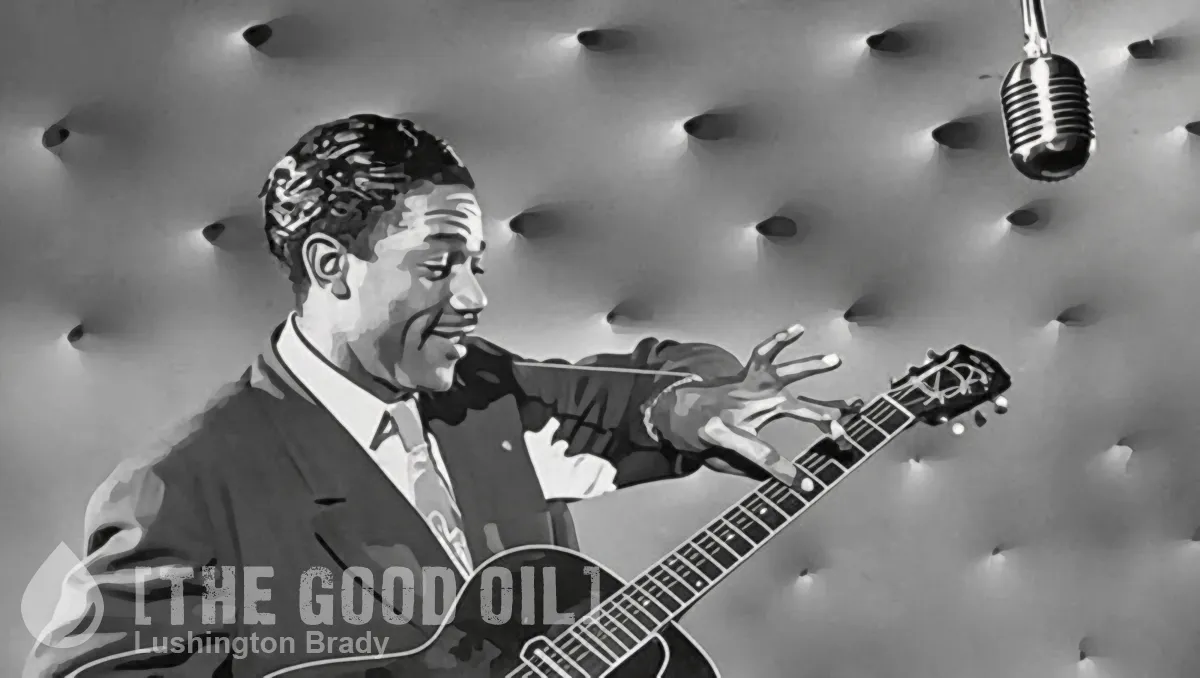No doubt due to the cautionary tales of mothers everywhere hoping to help their curious offspring survive to adulthood, tales of malevolent water spirits are near-ubiquitous around the world. In Anglo-Celtic culture, if the kelpies didn’t get you, Jenny Greenteeth would. Australia’s Aborigines famously had the bunyip (even British native William Buckley claimed to have seen one), while Slavic culture had the rusalka. In Central America, the wihwin might eat you if go too close to the water.
Naturally, Japan, with its bewildering catalogue of monsters known collectively as yokai, has its own distinctive malevolent aquatic creatures.
Imagine yourself on a sweltering, humid summer day in Japan, strolling beside a serene river. The air is tinged with a faint, fishy aroma, creating an unusual atmosphere. Suddenly, a sharp, beak-like face pops up from the water’s surface!
A small figure resembling a child with a shell on its back emerges, its body draped in hair or scales in myriad blue-green hues. Beware! You’ve just come face-to-face with the kappa, a mischievous water-dweller believed to inhabit Japan’s swamps, lakes and rivers […]
With more than eighty distinct iterations across Japan, the kappa holds traits of kami (divine beings), seirei (spirits) and yokai (monsters). One constant feature is the water-filled dish adorning its head, holding the essence of its life. Spill that water, and the kappa becomes powerless and dies, or so various tales recount.
That’s far from the oddest detail about kappas, though.
The kappa smells of fish and blends black, yellow, blue or green colors. Its appetite is rather healthy, with a taste for natto (fermented soybeans), soba (buckwheat noodles), nasu (eggplant) and certain kinds of uri (melon) such as kabocha (pumpkin) and kyuri (cucumber). Its love of cucumbers may have inspired the name of the dish kappa-maki or cucumber-based sushi.
And then there’s some distinctively Japanese weirdness. Including the kappas’ fascination with human anuses.
Some Japanese myths say human beings have something in their body called a shirikodama (small anus ball). The ball is thought to be the soul tucked inside the intestines. Many stories tell of a kappa sneaking up on swimmers from down below, drowning them and sucking out their shirikodamas.
Kappas still have a place in modern Japan. Signs carrying kappa warnings can be found near dangerous water bodies.
Officials in Japan often conduct safety inspections, posting kappa signs where they believe water-related incidents might occur. While not every poster explicitly depicts a kappa, there may be an unsettling image of a grin beneath the water’s surface, just beneath a struggling child, that evokes the kappa’s influence. These signs remind us that hidden dangers may lie beneath the water’s refreshing, shimmering allure.
The kappa’s presence continues to endure in modern Japan, but its image vastly differs from the scary version in folklore. In the 1960s, a “kappa craze” swept Tokyo, resulting in merchandise, logos and advertisements featuring friendlier kappa imagery. The kappa even became a mascot for environmental campaigns, encouraging people to care for Earth’s waters instead of threatening to drown them.
In keeping with Japan’s kawaii culture, modern kappa iconography tends toward the cute and adorable.
Kappa-themed keychains, clothing and plush toys have been sold in souvenir shops and continue to be loved by locals and tourists alike. It has transformed into a cute, endearing character within contemporary Japanese culture. Kappa matsuri (festivals) are held yearly in Aichi, Aomori, Kochi, Ibaraki and Tokyo and incorporate the little monster into their celebrations, embracing and preserving Japanese folklore into the modern day.
Wander along Kappabashi-dori, a street connecting Tokyo’s Ueno and Asakusa districts, and you’ll kappa statues and signs welcoming you into shops. You might find a smiling kappa at a post office, onsen or train station – or kappa-shaped station in the case of Tanushimaru station in Fukuoka. It’s also appeared as a character in several anime, manga and video games, such as Kapp’n, the ship captain in Nintendo’s Animal Crossing franchise.
GaijinPot Blog
Kappas have even been incorporated into the Harry Potter universe. The creatures feature sporadically in Hogwarts’ Defence Against the Dark Arts syllabus, and make several appearances in, naturally, the Fantastic Beasts… films.









